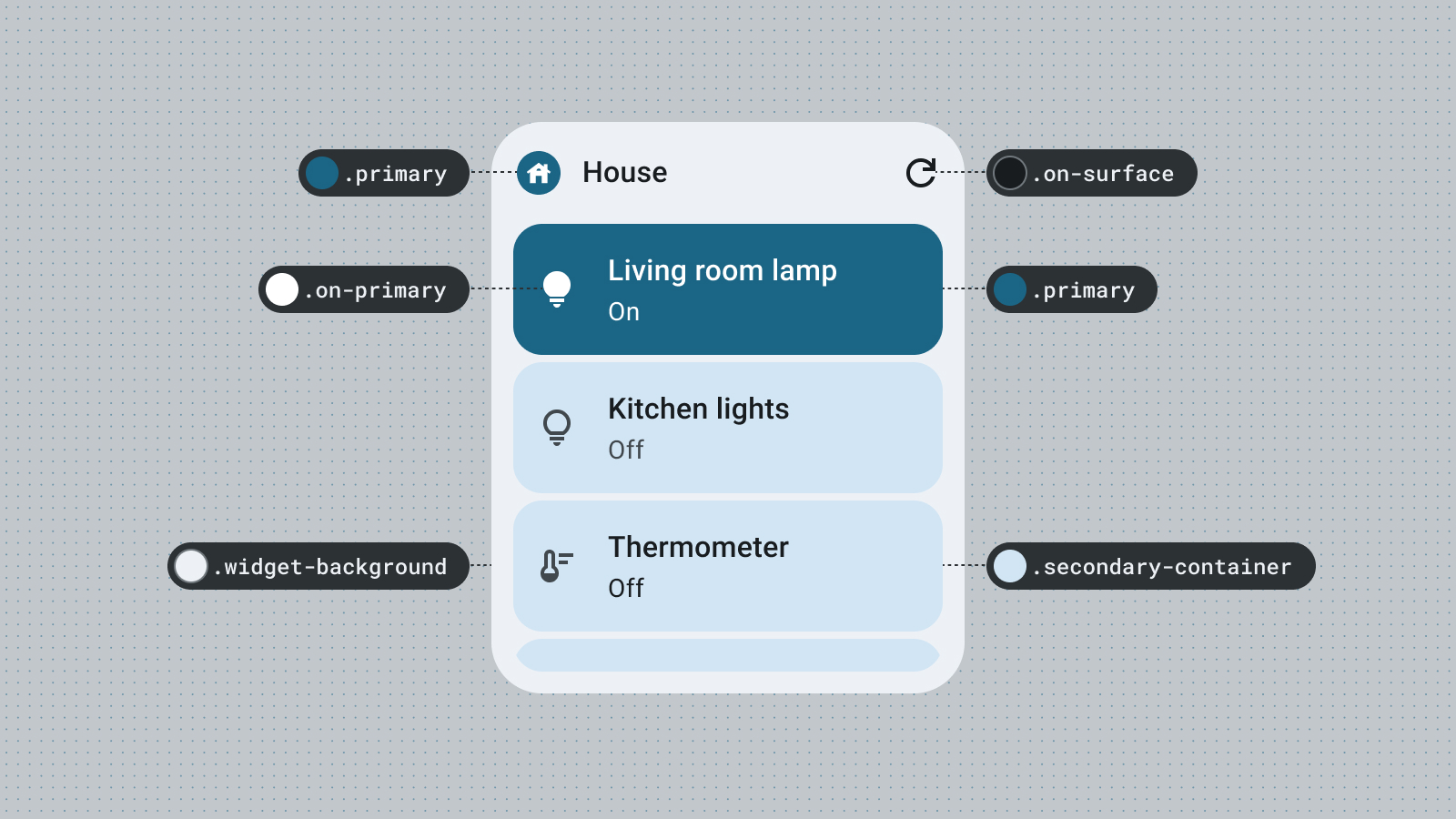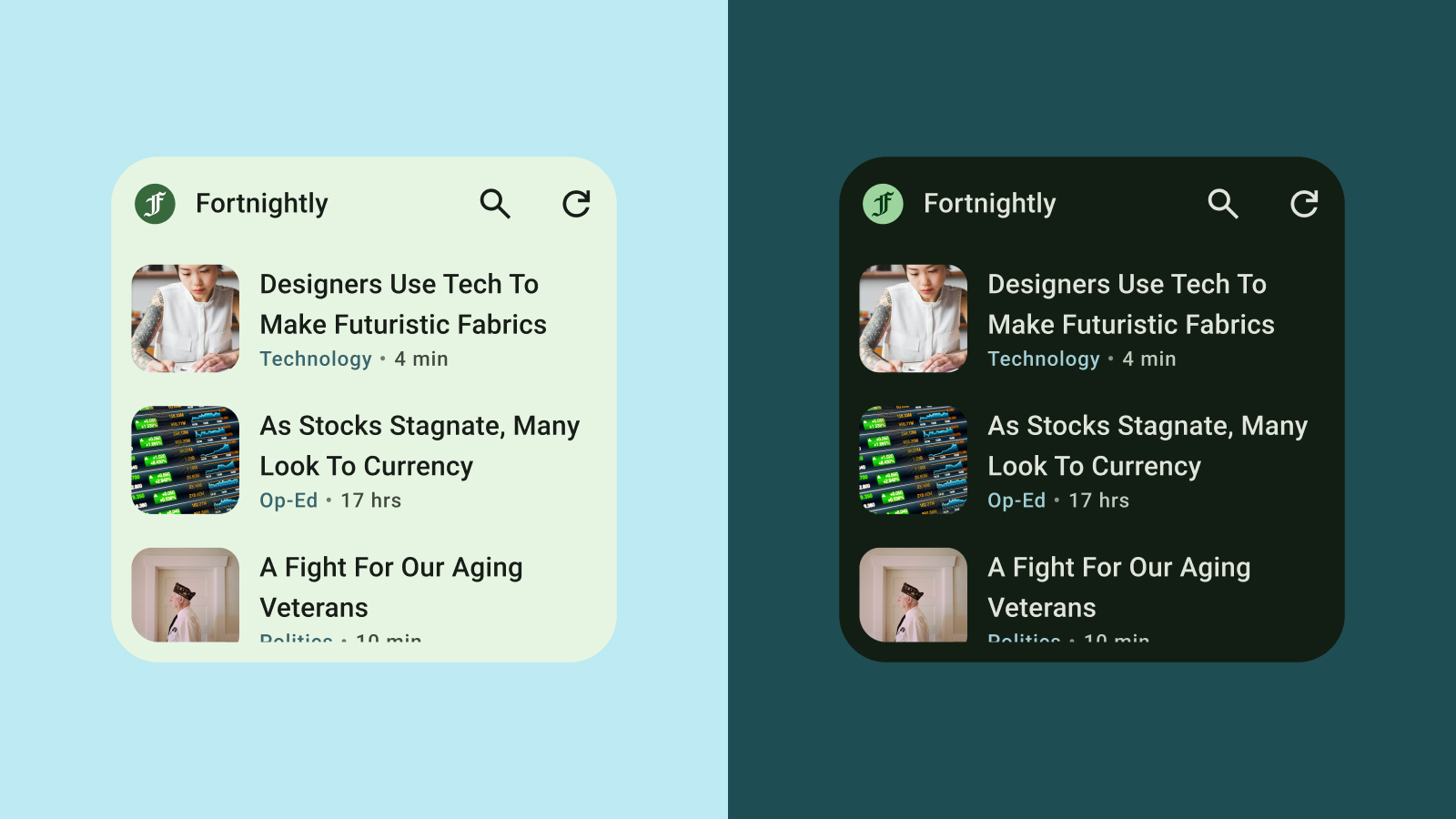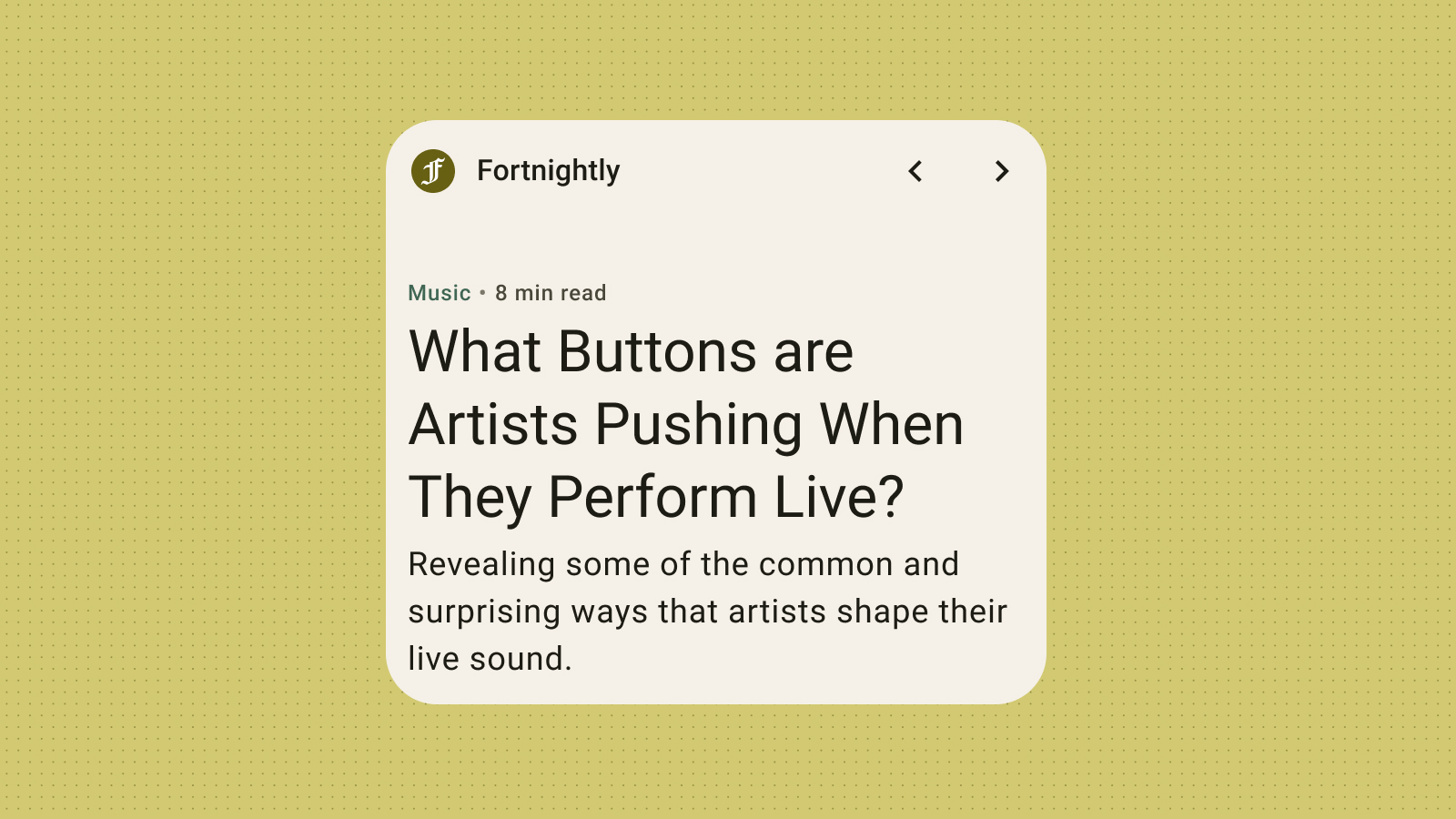من المهمّ تصميم التطبيقات المصغّرة بفعالية لتحقيق تجربة مستخدم جذابة ومتناغمة من الناحية المرئية. يتناول هذا القسم المفاهيم الأساسية و التقنيات لتحديد اللون وأسلوب الخط من أجل إنشاء التطبيقات المصغّرة الأكثر فائدة وجاذبيتك على Android.
اللون
استخدِم الألوان للتعبير عن الأناقة ونقل المعنى. إنّ اختيار ألوان مناسبة لتطبيقاتك المصغّرة مهم جدًا لسهولة القراءة والتخصيص، وبالطبع للتعبير عن هوية علامتك التجارية.
استخدِم أدوار وعناصر Material Color لاستيفاء إرشادات التباين في تسهيل الاستخدام وتوفير ميزات الألوان الديناميكية، مثل الألوان التي ينشئها المستخدم والمظاهر الداكنة أو الفاتحة.
لمزيد من المعلومات، يُرجى الاطّلاع على إرشادات الألوان في التصميم المتعدد الأبعاد.
شكل
يحدِّد شكل التطبيق المصغّر مزاجه. بالنسبة إلى التطبيقات المصغّرة المستطيلة، استخدِم سمة شعاع زاوية النظام. تحقّق هذه السمة اتساقًا على مختلف الأجهزة وتساعد في منع اقتصاص محتوى التطبيقات المصغّرة.
لمزيد من التفاصيل، يُرجى الاطّلاع على تنفيذ الزوايا المستديرة.
المظاهر الديناميكية
بدءًا من الإصدار 12 من نظام Android، يمكن للتطبيق المصغّر استخدام ألوان مظهر الجهاز للأزرار والخلفيات والمكونات الأخرى. ويؤدي ذلك إلى توفير اتساق مرئي على مستوى التطبيقات المصغّرة المختلفة ورموز الشاشة الرئيسية والخلفيات، ما يقدّم لمستخدمي Android تجربة استخدام أكثر انسجامًا. يضمن استخدام الرموز المميّزة للألوان المُقدَّمة أن يبدو تطبيقك المصغر مدمجًا في مظاهر الأجهزة التي يوفّرها مصنعو الأجهزة المتعدّدون والمظاهر الديناميكية التي يضبطها المستخدم.

الوضع الفاتح والوضع الداكن
"الوضع الداكن" هو إصدار مخصّص للأماكن ذات الإضاءة الخافتة من واجهة مستخدم الجهاز، ويعرض في أغلب الأحيان ألوانًا سطحية داكنة. يتزايد استخدام المستخدمين للوضع الداكن لتحسين عمر البطارية وراحة العين. إذا لم تتكيّف الأداة المصغّرة مع الوضع الداكن، ستظهر خارج مكانها وقد تتسبب في إزعاج المستخدمين.

أسلوب الخط
يساعد أسلوب الخط في جعل الكتابة سهلة القراءة وجميلة. استخدِم أحجام الخطوط و كثافتها لإنشاء تسلسل هرمي واضح، ما يوجّه نظر المستخدم إلى العناصر الأكثر أهمية. انتبه إلى المسافة بين السطور والمسافة بين الأحرف (التقران) لتحسين قابلية القراءة، خاصةً لعرض النصوص الأصغر حجمًا ضمن المساحة المحدودة للأداة المصغّرة.
تسلسل هرمي
يتم التعبير عن التسلسل الهرمي من خلال الاختلافات في سمك الخط وحجمه وارتفاع السطر وتباعد الأحرف. تنظِّم مقياس الكتابة المعدَّل أنماط النصوص في خمسة أدوار تم تسميتها لوصف أغراضها. أنماط النصوص الخمسة هي النص المعروض والعنوان والعنوان الفرعي والنص الأساسي. لا تعتمد الأدوار الجديدة على الجهاز، ما يتيح تطبيقها بسهولة أكبر في مجموعة متنوعة من حالات الاستخدام.


